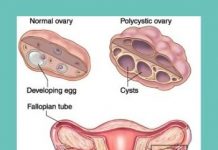Women often find that using temperature variations during childbirth, such as applying heat packs and thermiva, can be an effective tool to reduce pain. Heat packs have measurable therapeutic benefits and decrease pain during childbirth in a number of ways.
Heat Provides Distraction from the Labor Pain
If a mother is focusing solely on her labor pain, that is what she will feel. However, if there are competing sensations that take her mind elsewhere, she will not be able to concentrate as completely on the pain. Giving her a competing and more pleasant sensation such as a heat pack can help distract her from the less pleasant sensations she will be experiencing.
Heat Packs Block the Transmission of Pain to the Brain
When heat is applied to the skin, it stimulates the pain receptors so that the transmission of pain to the brain is reduced. In the same way that the heat distracts the mother’s attention, it also distracts her brain, so to speak, by sending another signal instead. In essence, applying a heat pack to the areas of pain during labor blocks some of the pain signal to the mother’s brain.
Heat Packs Lessen Severity of Back Labor Pain and Reduced Length of Labor
When the mother experiences pain in her lower back both during contractions and in between, it is known as “back labor.” This type of labor is known to be long and arduous. In fact, a recent study showed that when a heat pack was used on the mother’s lower back during labor that the mothers reported that the severity of pain was lessened with help of other remedies like a remedial massage. Researchers also found the length of the first stage of labor was reduced in the group that used heat packs.
Heat Packs Used as a Warm Compress Can Relieve Pain and Reduce Tearing
Warm compresses are often used in the last stage of labor when the pain of the baby’s head is stretching the mother’s perineum. Research has shown that moist warm compresses are effective in relieving pain, reducing tearing and preventing postpartum incontinence.
To use a warm compress, fill a small basin with warm, but not hot water. Use a washcloth or disposable cotton cloth available at the hospital. Your care provider will apply the moist warm compress in between contractions just prior to the birth of your baby.
If you are also using washcloths for ice packs, use ones that are colored so you do not mix them up.
When to Use Ice Packs Instead of Heat
If a mother is very warm during labor, a heat pack will only make her feel more uncomfortable. She also might benefit more from an ice pack if there is an swelling in her body, since applying heat can increase swelling.
Making Your Own Heat Packs Using Rice Socks
Heat packs can be made using a new athletic tube sock and a bag of rice. Fill the sock about 2/3 full with rice. You may decide to add a drop of your favorite essential oil such as lavender, for some aromatherapy during labor. Then knot the end of the sock.
Heat the rice sock for about two minutes. Wrap the rice sock in a towel before placing on the mother’s skin. Microwave it for one minute to re-heat. The rice sock will generally stay warm for about 30 minutes.
Heat packs are also sold as scented herbal packs or spa wraps for shoulders, neck and back. They generally start at about $20 and up and are available in drugstores or bath stores.
Guidelines for Safe Use of Heat Packs
Placing a heat pack directly on mother’s skin can cause burning. It is important to place a layer of clothing or wrap the heat pack in a pillowcase or towel and unwrap it as it cools to avoid damage to her skin. Following these guidelines for safely using heat packs are even more crucial when a mother has an epidural since she will not be able to feel the heat as well.
The only exception to this guideline is with a warm compress that is placed directly on the mother’s perineum. Be sure that the water you use for a warm compress is warm and not hot. Talk to your care provider should you have any questions about the use of warm compresses.











